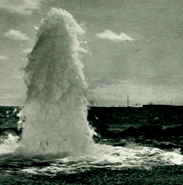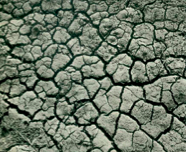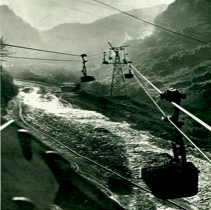
Mikhail Kocharian, Vladimir Kharstyan. Water--A Life. Published in Sovetskoe Foto 11 (November 1964)
Of the numerous culturally fascinating movements that came out of the late 1950s and early 1960s, photography as art became of particular interest to Soviet photojournalists. For those who are less familiar with the history of visual culture in the Soviet Union, photography was removed from artistic institutions in the mid-1930s, and thus garnered very little cultural prestige. In an effort to gain the status of artists, rather than craftsmen, those who worked for the primer photography journal, Sovetskoe Foto (The Soviet Photograph) embarked on a crusade to catapult photography into the socialist realist, or officially recognized, art world.

Kocharian and Kharstyan. Water--A Life.
Interestingly enough, the push to classify photography as an officially recognized art form involved questions of how photographic narrative related to aesthetics. By the late 1950s, a clear consensus appears to have been reached: the standard for creating a professional photographic image was that it fulfills the role of document and art simultaneously. The critiques that emerged from the pages of Sovetskoe Foto defined the necessary criteria of a successful photojournalistic image: a ‘good’ image should be artistic, give an eyewitness account of an event, and have a narrative structure and aesthetic that was easily discernable to its viewers. Mikhail Kocharian and Vladimir Kharstyan’s two photographs entitled Water-A Life (see above), shown at the 5th All-Union Photographic Exhibition, were criticized because they provided only an eyewitness account of scorched dry earth and a stream of water shooting up into the air. According to its reviewer, the images lacked a coherent narrative and the photographers acted “more as eyewitnesses than as artists and poets.”[1] Kocharian’s photograph was compared to a second photograph featured at the exhibition, B. Dadvadze’s Manganese (see below). Dadvadze’s image of manganese being carted out of a Georgian mine was extolled for its artistry, and Dadvadze was lauded for his ‘creative activities’ in the industrial landscape.

Davadze, Manganese, published in Sovetskoe Foto 11 (November 1964)
Sovetskoe Foto’s preoccupation with the narrative capacities of photographs is inherently problematic. As a visual technology, photography undermines linear narratives and promotes a particular way of looking at a given phenomenon, “dislocating time and space.”[2] In particular, photojournalists underscored a universal photographic language which, for the most part, transcended the boundaries of gender, ethnicity, race, age and so on and so forth.
[1] Diko, L. “In Light of New Requirements” Sovetskoe Foto No. 11 (November), 1964, 12.
[2] Liz Wells, Photography: A Critical Introduction, 19.
Comments
Soviet photography
Thanks for this terrific post on Soviet attitudes toward photography. I learned a lot!
You're probably aware of another, horrific chapter in Soviet photography, under Stalin, portrayed powerfully in David King's The Commissar Vanishes.